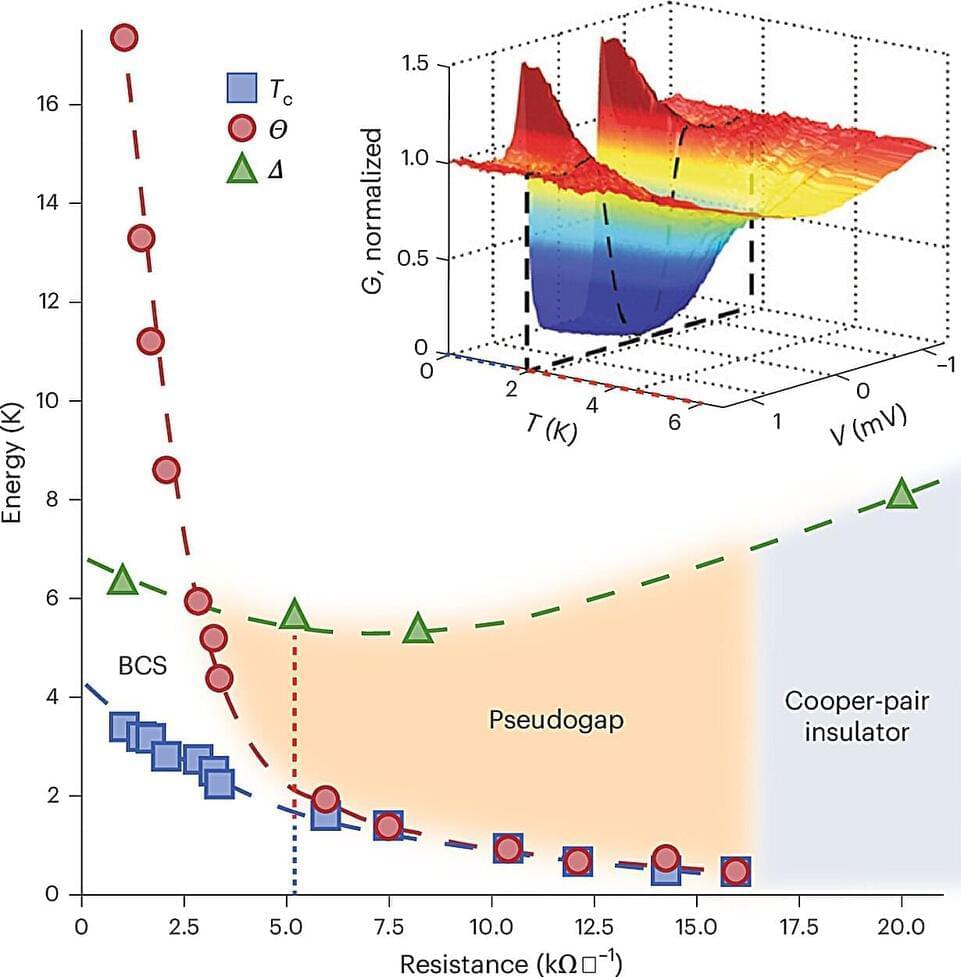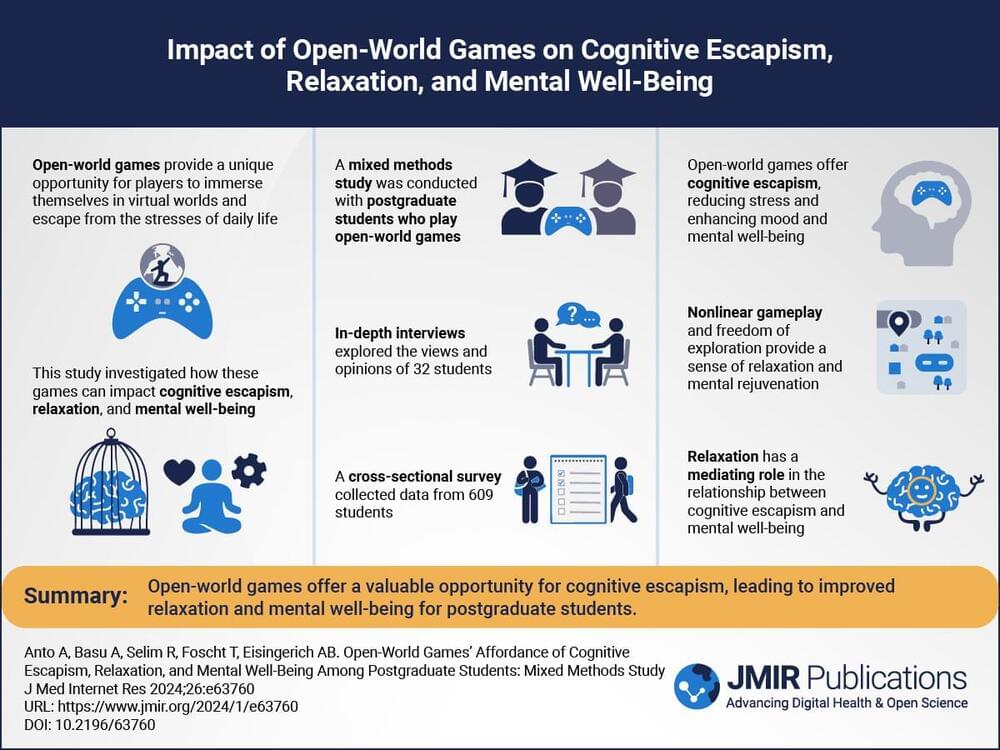In the expansive realm of science fiction, spacecraft come in a stunning array of shapes, sizes, and technological capabilities. While much has been said about the iconic vessels in the Star Trek universe, this video takes a refreshing turn to explore a broader landscape of sci-fi. We will delve into the fascinating world of the ten largest spherical structures that have captivated audiences in movies and TV series. From massive space stations to monumental alien constructs, each of these remarkable creations offers unique insights into the imaginative possibilities of the genre.
Category: entertainment – Page 12

Superconducting nanostrip single photon detectors fabricated of aluminum thin-films
We systematically investigated the detection performance of Al nanostrips for single photons at various wavelengths. The Al films were deposited using magnetron sputtering, and the sophisticated nanostructures and morphology of the deposited films were revealed through high-resolution transmission electron microscopy. The fabricated Al meander nanostrips, with a thickness of 4.2 nm and a width of 178 nm, exhibited a superconducting transition temperature of 2.4 K and a critical current of approximately 5 μA at 0.85 K. While the Al nanostrips demonstrated a saturated internal quantum efficiency for 405-nm photons, the internal detection efficiency exhibited an exponential dependence on bias current without any saturation tendency for 1550-nm photons. This behavior can be attributed to the relatively large diffusion coefficient and coherence length of the Al films.

Quantum phase transition in indium oxide films defies superconductor norms
A team of physicists at Université Grenoble Alpes, CNRS, in France, working with a colleague from Karlsruhe Institute of Technology, in Germany, has observed an odd quantum phase transition in indium oxide films. In their study published in the journal Nature Physics, the group used microwave spectroscopy to study the internal properties and behavior of indium oxide films as they transitioned between superconducting and insulating states.
Prior research has shown that when a superconductor undergoes a phase transition between superconductivity and insulation, its superfluid stiffness generally occurs in a smooth, continuous fashion. Superfluid stiffness is a measurement that has been developed to gauge how resistant a material is to changing from one phase to another. In this new study, the research team found an exception to that rule in indium oxide films.
In their work, the researchers were investigating the properties of indium oxide, a material that, when chilled to a certain temperature, changes to a superconductor—it is also known to have multiple disorders at multiple levels. Such disorders give the material unusual properties.

Open-World Games’ Affordance of Cognitive Escapism, Relaxation, and Mental Well-Being Among Postgraduate Students: Mixed Methods Study
Background: Open-world games, characterized by their expansive and interactive environments, may offer unique cognitive escapism opportunities, potentially leading to relaxation and enhanced well-being. These games, such as “The Legend of Zelda: Breath of the Wild” and “The Legend of Zelda: Tears of the Kingdom,” allow players to experience a sense of freedom and autonomy, which can reduce stress and improve mental health. While previous research has examined the general impact of video games on mental well-being, specific studies on the effects of open-world games among postgraduate students are limited.
Objective: This study aims to investigate the relationships between cognitive escapism provided by open-world games and their effects on relaxation and well-being. The goal was to understand how the immersive nature of these games contributes to stress reduction and overall mental health improvement among postgraduate students.
Methods: A mixed methods approach was used, which involved in-depth exploratory qualitative interviews and a survey of 609 players of popular open-world games. Quantitative data were collected using standardized questionnaires to measure open-world games’ affordance of cognitive escapism, relaxation, and well-being. Qualitative data were obtained through 32 in-depth interviews that explored players’ experiences and perceptions of cognitive escapism, relaxation, and mental well-being.
Inter-Galactic Static
Track 6 from the Album: Uncharted Reality.
“Sir Karland, you imply this project is secret, that not even the Brinian Royal Council, or R.B.R.D.C. knows of its existence, is this true?”
Composer: Henry Triason.
Artist: Chkylis.
Track: Inter-Galactic Static.
Album: Uncharted Reality.
Creation Year: 2018

New Xreal glasses: virtual screens compatible with nearly all devices
Xreal is making waves in the world of mixed reality technology, offering a unique approach with its lightweight, almost portable glasses that project virtual screens directly in front of users’ eyes. The latest models, Xreal One and One Pro, come with a game-changing feature that enhances their usability—plug-and-play compatibility with nearly any device equipped with a USB-C video output.
Unlike previous models like the Air 2 Ultra, the Xreal One and One Pro are focused purely on screen mirroring. The glasses can seamlessly display content from an extensive range of devices, including iPhones, Android smartphones, Macs, PCs, and even the Steam Deck. All it takes is a quick connection via USB-C, and you’ll have a massive virtual screen in front of you—perfect for work, gaming, or watching a movie.
The technology behind these glasses relies on micro-OLED displays made by Sony, offering a resolution of 1920 × 1080 per eye. While this doesn’t quite match the ultra-high resolution of Apple’s Vision Pro, it’s worth noting that Xreal’s glasses come at a fraction of the cost—nearly ten times cheaper, in fact.


Gambling in Space: The Future of Entertainment Beyond Earth
Conquering space is among the main challenges humanity now has — and the huge number of discoveries made in recent decades suggests that nothing is impossible. Tourism beyond Earth is already gaining popularity, and this sector will evolve soon. However, simply enjoying the space views may become boring shortly, and travellers will search for alternative entertainment options. It’s now pretty early to ask whether people will be able to build a land-based casino on the Moon, but some experiences may become available in the near future. The iGaming sector is rapidly evolving, leaving offline settings behind. We can predict that space gambling will begin from top-rated slot games not on GamStop, which are widely accessible globally. Casino platforms have a vast growth potential nowadays, so what would prevent people from using them when enjoying space tourism?
The first bet beyond the Earth has already been placed — this significant event happened in 2021 when Jared Isaacman, the Inspiration 4x commander, wagered on the NFL. Although it may take a while for such betting experiences to become more widespread, the beginning has already been made.

The Thesis that Killed Academia?
Brilliant is a great place to improve your problem solving skills! First 30 days are free and 20% off the annual premium subscription when you use our link ➜ https://brilliant.org/sabine.
This is a brief comment on the recent social media episode in which a young woman attracted a lot of attention by graduating with a thesis on olfactory suppression in English prose. In this video, I try to put these events into context. I find it difficult to wrap my head around the sudden outrage. Let me know what you think about this.
🤓 Check out my new quiz app ➜ http://quizwithit.com/
💌 Support me on Donorbox ➜ https://donorbox.org/swtg.
📝 Transcripts and written news on Substack ➜ https://sciencewtg.substack.com/
👉 Transcript with links to references on Patreon ➜ / sabine.
📩 Free weekly science newsletter ➜ https://sabinehossenfelder.com/newsle…
👂 Audio only podcast ➜ https://open.spotify.com/show/0MkNfXl…
🔗 Join this channel to get access to perks ➜
/ @sabinehossenfelder.
🖼️ On instagram ➜ / sciencewtg.
#science #sciencenews #academia